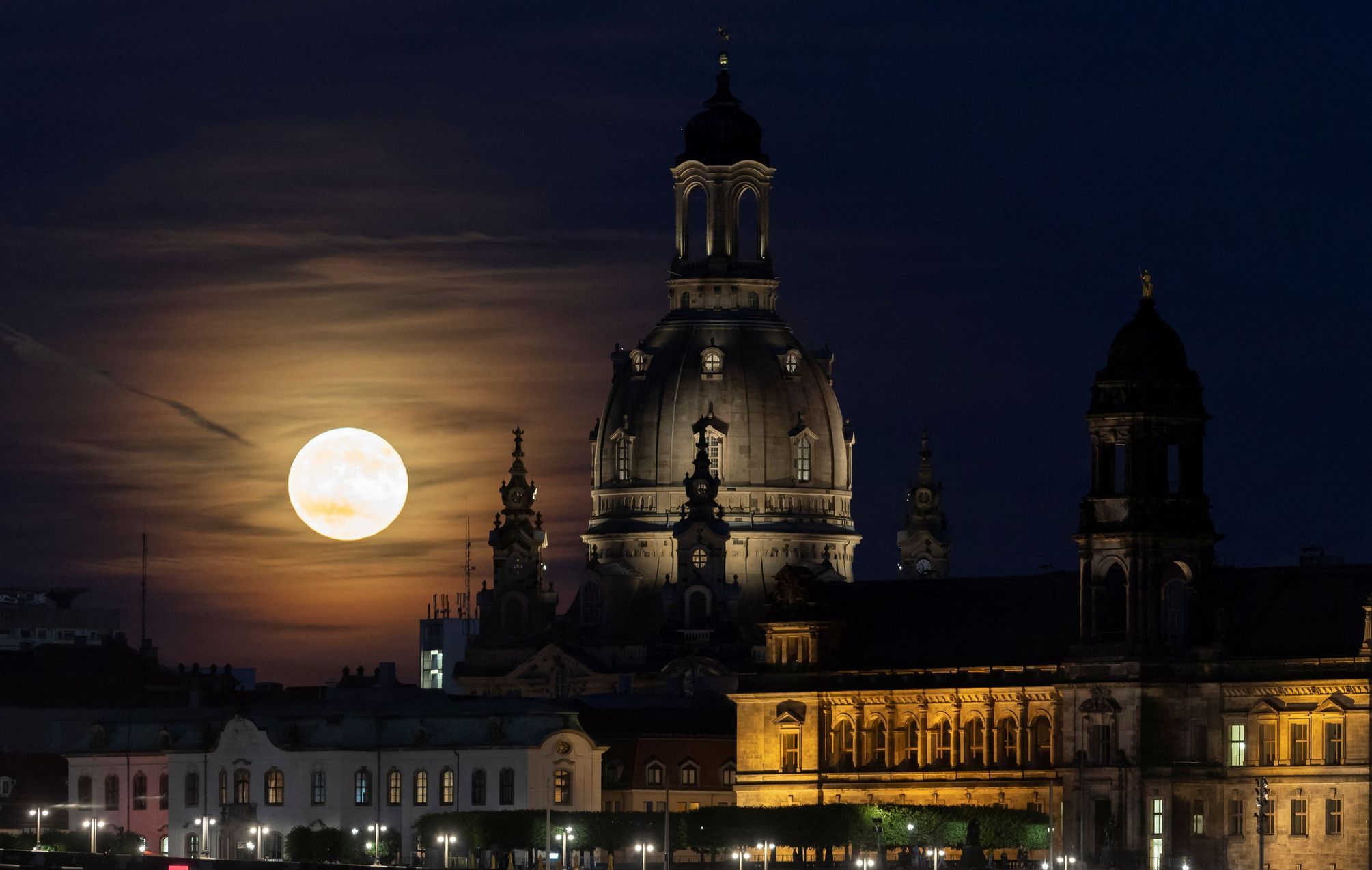On Wednesday evening, the moon will be closest to Earth and at the same time full, creating a phenomenon called a super full moon. It will be possible to watch it from anywhere. But it is best observed outside the city to see how the moon illuminates the night landscape. However, according to meteorologists, partial cloud cover will spoil the interesting spectacle.
It will be possible to observe the super full moon this year for the second time and also for the last time. People will have another option only in August next year. In order for this phenomenon to occur, two circumstances must come together at once. “There must be a full moon and at the same time the Moon must be on its elliptical path around the Earth at the closest point to the Earth, i.e. in the so-called ground floor,” explains Pavel Suchan from the Astronomical Institute of the Academy of Sciences.
“More precisely, it’s a situation where the distance of the full moon differs from the smallest possible one by less than ten percent,” adds the astronomer. On Wednesday at 11 a.m., the Moon will approach the Earth at 357,267 kilometers and will therefore be about 30,000 kilometers closer than normal.
In the Czech Republic, the best conditions for observing the phenomenon occur at 20:38. Suchan points out, however, that it is best to observe the super full moon outside the city, which makes it impossible to enjoy the moon’s ability to illuminate the night landscape due to the lamps. “Its light is enough for normal orientation. At the same time, it shines at 0.25 lux, i.e. a value roughly eight times smaller than the least lit places under public lighting lamps,” he explains.
A super full moon is not always noticeably brighter than a normal full moon. According to Suchan, the connection of the phenomenon with an exceptionally bright and large lunar disk in the sky is more or less illusory. “When it comes to the brightness of the Moon, it depends on its height above the horizon and also on how exactly the moment of the full moon coincides with the moment of reaching the ground. So not every super full moon is equally super,” says the astronomer.
The one in July is nicknamed the deer, because it is in this month that deer begin to grow new antlers. However, it is sometimes also called hay or stormy. While the naming of full moons is several centuries old, the term super full moon is relatively new, but not an official astronomical term.
More than a decade ago, it was still unknown, it did not become public knowledge until 30 years after its first use. It wasn’t until the 9.1-magnitude earthquake that struck Japan in March 2011 that sparked more interest in this phenomenon. According to some, it was the super full moon that was supposed to cause the disaster. Richard Nolle, the author of the term himself, joined this theory, but scientists refute such claims.
The super full moon is not the only astronomical phenomenon that will take place in the sky this year. On the night of August 12-13, the annual Perseid meteor shower will be visible, and on August 14, Saturn will come into opposition with the Sun. The second largest planet in the solar system will therefore be visible throughout the night.
–


